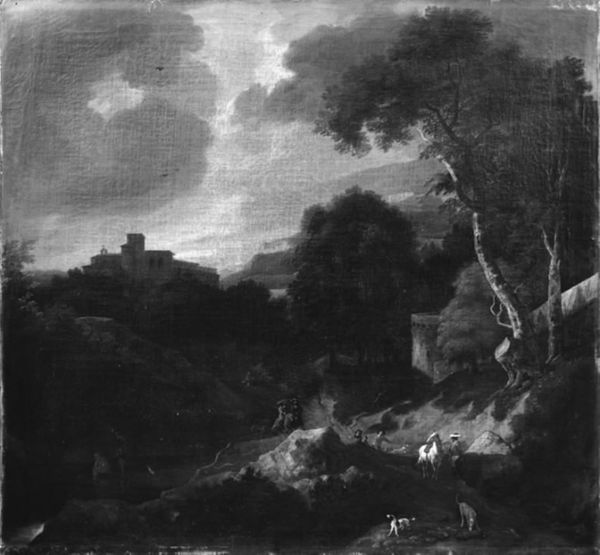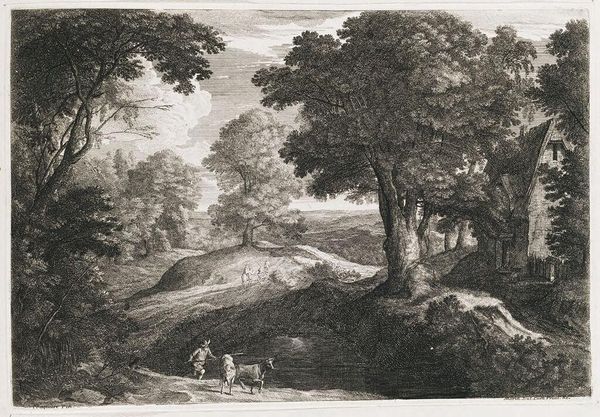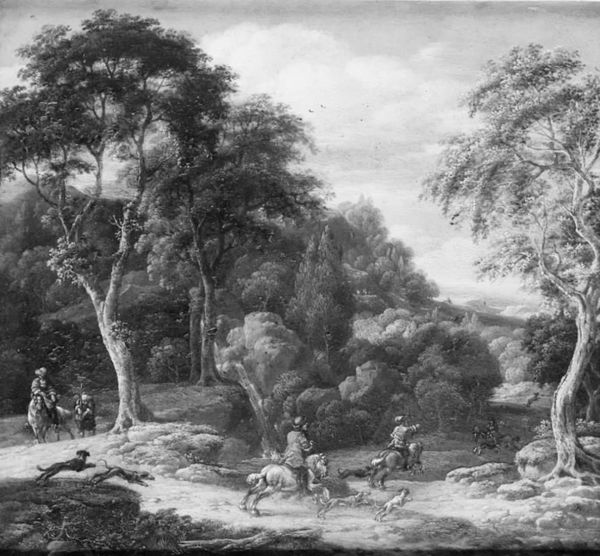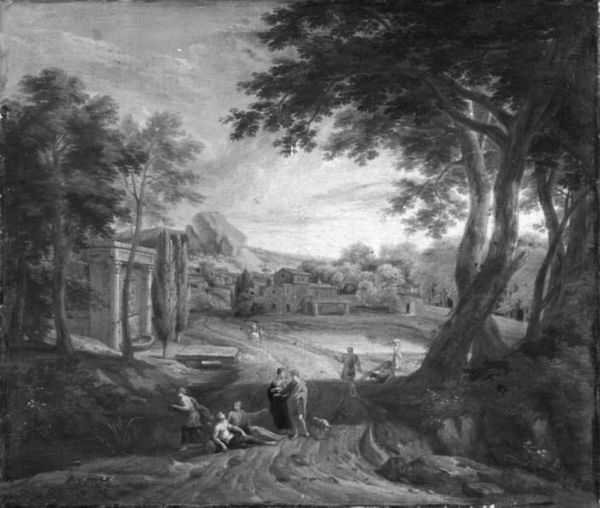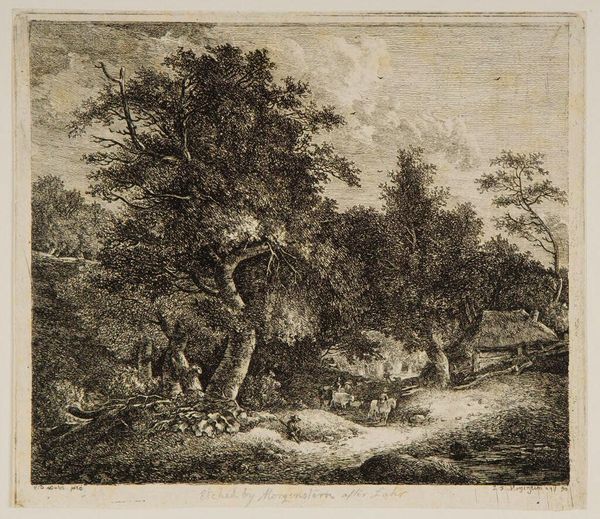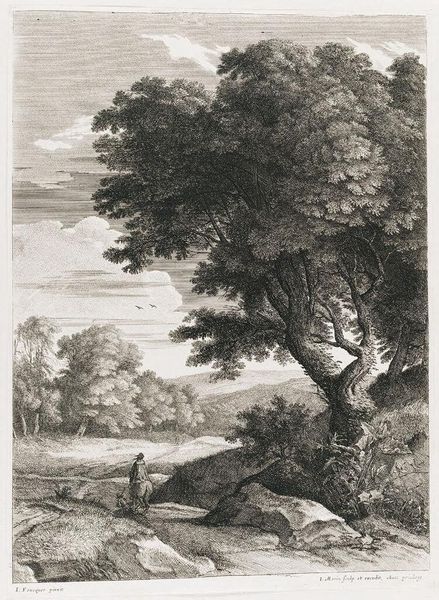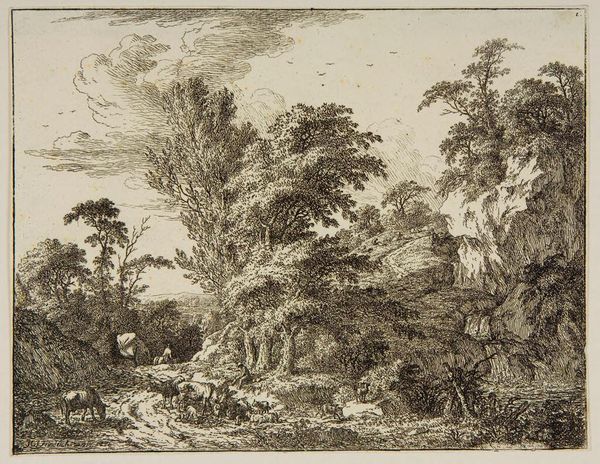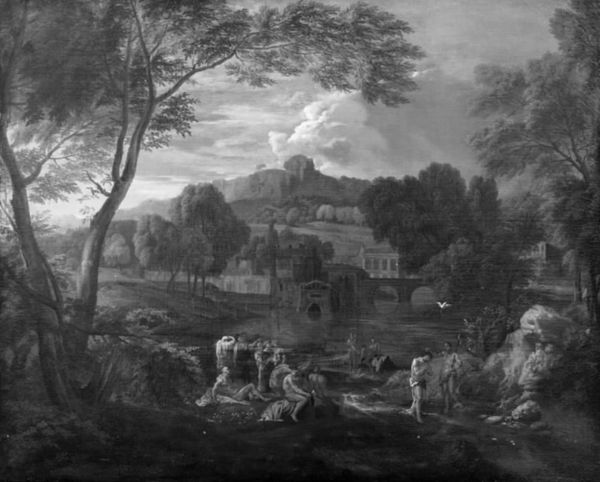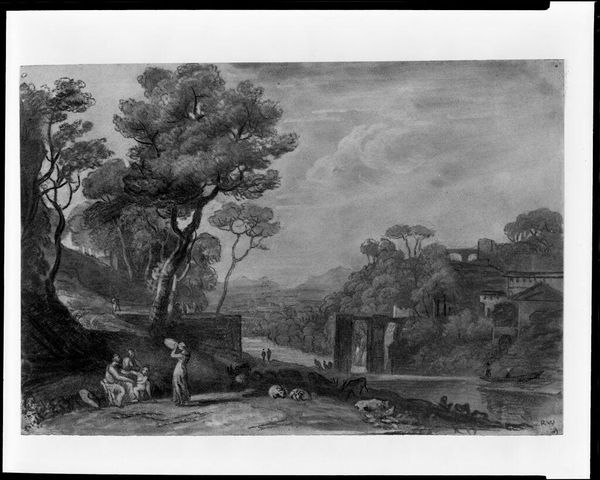
painting, oil-paint, canvas
#
baroque
#
painting
#
oil-paint
#
landscape
#
charcoal drawing
#
canvas
#
history-painting
#
charcoal
Dimensions: 106 cm (height) x 128 cm (width) (Brutto)
Curator: The interplay of light and shadow really catches my eye here, setting an almost dreamlike tone. What do you see, Editor? Editor: A landscape where serenity meets the sacred. This canvas, called “The Rest on the Flight into Egypt,” likely created sometime between 1627 and 1666, invites contemplation, but the specific painter remains a mystery to us. Curator: "Rest on the Flight to Egypt" is a well-worn theme, popular with patrons for their domestic chapels. But, interestingly, the anonymity surrounding the creation almost democratizes it; we're left to engage without the weight of a known master. It’s currently held at the SMK, the Statens Museum for Kunst. Editor: Exactly. Look at how the artist bathes the Virgin and Child in that otherworldly glow, tucked under the protective arm of the massive tree. The symbolism is immediate: safety, refuge, the nurturing power of nature, shielding innocence. It's an ancient idea. Curator: Yes, and the context here—the Counter-Reformation’s emphasis on relatable, human portrayals of biblical figures—definitely shaped the visual vocabulary. The holy family becomes less remote, almost pastoral, reflecting the Church's efforts to connect with the everyday lives of the faithful. Editor: And see how that bright halo effect almost dissolves into the surrounding landscape? It feels deliberately integrated, emphasizing the divine presence interwoven with the natural world. It also diminishes some of the classical divine authority. I wonder if the piece originally served as part of a series, or held some kind of narrative clue now missing from the singular piece. Curator: That could well be. Its place within larger devotional practices tells us so much. Even now it holds a power, offering us a moment of reflective calm within a museum space, connecting us to centuries of artistic and religious traditions. Editor: Ultimately, beyond the art-historical context, I find its enduring appeal lies in that universal longing for peace, for protection of the vulnerable—ideals rendered so beautifully here through light, symbol, and the promise of respite.
Comments
No comments
Be the first to comment and join the conversation on the ultimate creative platform.
